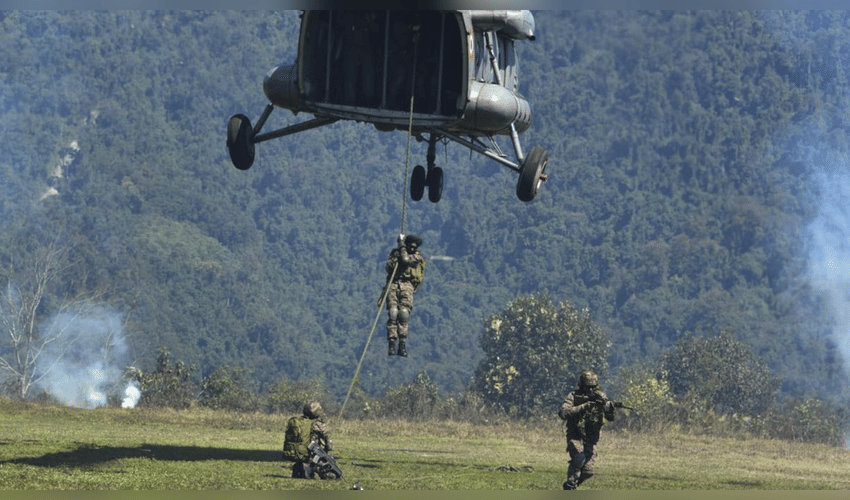Military
India Strengthens Tri-Service Coordination in High-Altitude 'Poorvi Prachand Prahar' Exercise

India recently launched a major tri-service military exercise named "Poorvi Prachand Prahar" in the high-altitude, rugged terrain of Mechuka in Arunachal Pradesh. This drill is designed to enhance the operational synergy and warfighting capabilities of the Indian Army, Navy, and Air Force together. Occurring amid challenging mountainous conditions, the exercise tests multi-domain integration—combining land, air, and maritime operations—to boost the joint effectiveness and adaptability of India’s armed forces.
The exercise aims to refine interoperability among the three services, improve situational awareness, and validate command-and-control frameworks for coordinated missions. A notable feature is the coordinated deployment of special forces, unmanned platforms, precision weapons, and networked operations centers all functioning cohesively in high-altitude environments. This involves testing revised tactics, techniques, and procedures to strengthen combat agility and technological adaptation.
"Poorvi Prachand Prahar" continues the progression of India’s tri-service integration initiated through previous exercises like "Bhala Prahar" in 2023 and "Poorvi Prahar" in 2024. Conducting such a complex drill among Arunachal Pradesh’s tough terrain sends a strategic message of readiness along sensitive frontier areas. It also spotlights India’s commitment to leveraging indigenous defense technologies and enhancing joint force capabilities in anticipation of future conflict scenarios.
This exercise is a significant step toward multi-domain operational readiness for India, combining elements like cyber warfare, electronic warfare, real-time intelligence sharing, and network-centric operations in realistic settings. It reflects a forward-looking defense strategy that prepares India’s forces to operate seamlessly across diverse domains and challenging geographies, ensuring swift, coordinated, and effective responses to evolving security threats.



